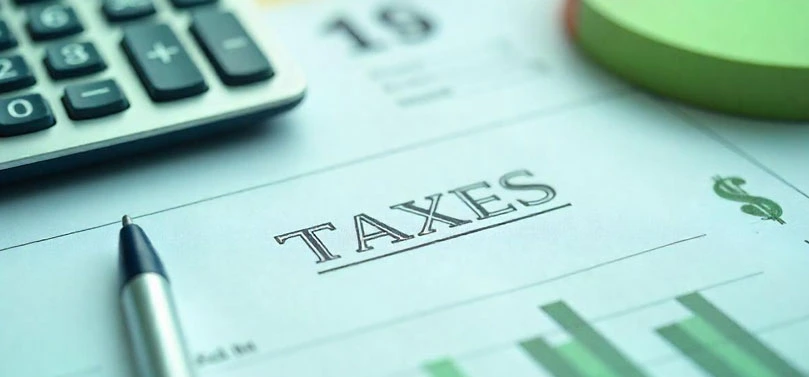The year 2022 has already heaped loads of uncertainty onto investors and companies, from the invasion of Ukraine to pandemic-driven supply chain disruptions. To top it all off, last month, consumer prices shot up an additional 1 percent compared with April 8.6 percent, according to data released Friday from the Bureau of Labor Statistics, as energy, housing and food prices drive up costs at the fastest pace in 40 years. That’s bad for both stocks and the economy, not to mention everyday Americans struggling to make ends meet.
Here’s how we got here and what to do about it if you’re invested in the market.
Throughout 2021, U.S. businesses dealt with unpredictable demand shifts and supply shocks related to the pandemic, but near-zero interest rates and trillions of dollars in pandemic relief supported consumer spending, boosted economic growth, and drove record corporate profits. Companies in the S&P 500 posted profits in 2021 that were 70% higher than in 2020 and 33% higher than in 2019, which helped fuel a stock market total return of nearly 29%, according to S&P Dow Jones Indices.
But in the first months of 2022, investors began to worry that the anticipated tightening of monetary policy by the Federal Reserve—intended to cool off stubbornly high inflation—would stifle economic growth and cause a recession. Prices began rising in the spring of 2021 due to high demand, supply-chain issues, and a labor shortage that pushed up wages. Inflation picked up speed in the first quarter of 2022 when China’s COVID-19 lockdowns impacted the supply of goods, and Russia’s invasion of Ukraine sent already high global food and fuel prices through the roof. In May 2022, the Consumer Price Index rose at an annual rate of 8.6%, a 40-year high, per the U.S. Bureau of Labor Statistics.
The relentless acceleration of price increases put pressure on the Federal Open Market Committee (FOMC), which met this week, to act aggressively to tame inflation. At the beginning of May, the FOMC raised the benchmark federal funds rate by 0.5%. This was the first half-percent increase since May 2000. Today, the Fed raised rates by another 0.75%, and their projections suggest there will be more to come, dependent upon economic data.
Rising interest rates push bond yields upward, and the opportunity for higher returns from lower-risk bond investments makes higher-risk stock investments less attractive. Moreover, stock investors are buying a portion of a company’s future cash flows, which become less valuable in an inflationary environment.
Some economists predict that inflation will peak this year as economic capacity improves and the Fed moves aggressively on interest rates. But no one knows for sure. And if upcoming data do not improve, investors should expect more volatility across asset classes.
Considering this, what’s a good course of action if you’re in the market? The answer is that it depends on your financial situation, but here are a few ideas for starters:
- Have enough cash for the short term
Making sure you have money on hand to cover necessary expenses is always a good idea. But it’s even more important during times like these. Set aside enough in cash or short-term fixed income instruments to cover six to 12 months of living expenses, emergencies, or other expected outlays like a down payment on a home.
If you’re near or in retirement, make sure you have enough to cover a year or more of living expenses that you would ordinarily pay for with withdrawals from your investments. This should be the amount necessary to supplement Social Security, pension income, and any other fixed income payments. In addition, money for expenses anticipated in the next five years should be in lower volatility investments like the Azzad Wise Capital Fund.
- Maybe it’s time to rebalance
Spreading investments among each of the Azzad portfolios is a good way to diversify your holdings. But over time, any portfolio can become overconcentrated in an asset class that has outperformed the broader market. So, you may want to look closely at the composition of your portfolio and consider rebalancing if you find yourself out of balance with your originally intended allocation. (Rebalancing involves selling some investments to buy others. Keep in mind that selling investments in a taxable account could result in a tax liability.) Talk with your Azzad advisor first if you’re feeling like this may make sense for you.
- Consider a Roth IRA conversion
For clients considering a Roth conversion, completing a conversion when markets have been clobbered can be a planning opportunity, as it effectively allows you to buy equities in the Roth IRA at much lower values with the goal of capturing a subsequent market rebound. For those who are pessimistic or nervous about markets, they could consider, for example, converting half now and then a remaining portion several months out from now to see how markets perform in the coming months. As with all moves like this, consult with your Azzad advisor first.
- Tax Loss Harvesting
There are ways to proactively use this current volatility to generate tax savings. Your advisor can prepare a list of loss harvesting recommendations before your next regularly scheduled review meeting to help you possibly save some on your tax bill.
- Don’t lose your cool
News headlines about higher prices at the pump or talk of recession are unnerving. Resist the urge to trade on the news. Reaching your financial goals requires a solid plan and a steady hand. The best way to meet your long-term goals is to just stay invested and stick to your allocation. Time and again, during periods of turmoil over the last century, stocks typically came back faster than anyone expected and did well on average over time.
Parting thoughts
It could be a while before investors can better assess how the economy and corporate profits will ultimately fare against fast-rising inflation and higher borrowing costs—and the stock market is no fan of uncertainty. Disappointing economic data and company earnings reports could continue to spark volatility in the coming months.
It may not be easy to take troubling headlines in stride, but if you have a sufficiently diversified, all-weather investment strategy, sticking to it is often the wisest course of action.
If you panic and flee the market during a downturn, you won’t be in a position to benefit from upward swings on its better days. And if you continue investing regularly for a long-term goal such as retirement, a down market may be an opportunity to buy more shares at lower prices.
Thank you for your continued trust and investment.
The return and principal value of stocks fluctuate with changes in market conditions. Shares, when sold, may be worth more or less than their original cost. Investments seeking a higher return tend to involve greater risk. Diversification is a method used to help manage risk. It does not guarantee a profit or protect against investment loss. The S&P 500 is an unmanaged group of securities that is considered representative of the U.S. stock market in general. The performance of an unmanaged index is not indicative of the performance of any specific investment. Individuals cannot invest directly in an index. Past performance is not a guarantee of future results. Actual results will vary. Dollar-cost averaging does not ensure a profit or prevent a loss. Such plans involve continuous investments in securities regardless of fluctuating prices. You should consider your financial ability to continue making purchases during periods of low and high price levels. However, this can be an effective way for investors to accumulate shares to help meet long-term goals.



